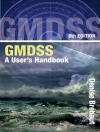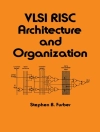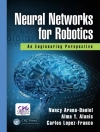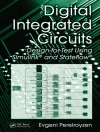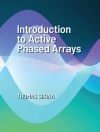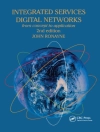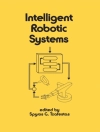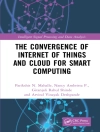Practical lab manual on the stepwise description of the experimental procedures of micro electromechanical systems (MEMS) devices
Micro Electromechanical Systems (MEMS) is a highly practical lab manual on the relevant experimental procedures of MEMS devices, covering technical aspects including simulations and modeling, practical steps involved in fabrication, thorough characterizations of developed MEMS sensors, and leveraging these sensors in real-time targeted applications.
The book provides in-depth coverage of multi-physics modeling for various sensors, as well as fabrication methodologies for photolithography, soft lithography, 3D printing, and laser processing-based experimental details for the realization of MEMS devices. It also covers characterization techniques from morphological to compositional, and applications of MEMS devices in contemporary fields such as microfluidics, wearables, and energy harvesters. The text also includes a foundational introduction to the subject.
The book covers additional topics such as:
- Basic fluid flow and heat transfer in microfabrication, Y and T channel mixing, and simulation processes for Droplet generation
- Simulations based on cyclic voltammetry and electrochemical impedance spectroscopy, screen and ink-jet printing, laser-induced graphene, reduced graphene oxide, and 3D printing
- X-ray diffraction, scanning electron microscopy, optical microscopy, Raman spectroscopy, energy dispersive spectroscopy, and Fourier Transform Infrared (FTIR) Spectroscopy
- Experimental stepwise details to enable students to perform the experiments in the practical laboratory and future outlooks on the direction of the field
A practical guidebook on the subject, Micro Electromechanical Systems (MEMS) is a must-have resource for students, academicians, and lab technicians seeking to conduct experiments in real-time.
Содержание
About the Editor xv
List of Contributors xvii
Preface xxi
About the Companion Website xxix
1 Multiphysics Simulations on the Effect of Fluidic Concentration Profiles Over Y-Channel and T-Channel Designs 1
Pavar Sai Kumar and Sanket Goel
1.1 Introduction 1
1.2 Real-Time Applications of This Study 2
1.3 Simulation Section 2
1.3.1 Prerequisites 2
1.3.2 Computer-Aided Designing (CAD) 2
1.3.3 Simulation Parameters 2
1.4 Results and Discussions 3
1.4.1 Model Designing 3
1.4.2 COMSOL Simulations 3
1.5 Conclusion 10
References 10
2 Droplet Generation in T-Junction Microchannel Using Multiphysics Software 13
Abhishek Kumar and Sanket Goel
2.1 Introduction 13
2.1.1 Brief Overview 14
2.2 Simulation Section 15
2.2.1 Prerequisites 15
2.2.2 Model and Geometry Definition 15
2.2.3 Simulation Parameters 15
2.3 Result and Discussion 17
2.4 Conclusion 17
References 18
3 Cleanroom-Assisted and Cleanroom-Free Photolithography 21
Abhishesh Pal, Satish Kumar Dubey, and Sanket Goel
3.1 Introduction 21
3.2 Photolithography Basics, Classification and Applications 22
3.2.1 Cleanroom-Assisted Photolithography 23
3.2.2 Cleanroom-Unassisted Photolithography 23
3.2.3 Cleanroom-Assisted vs. Cleanroom-Unassisted Photolithography 24
3.3 Experimental Section on Designing and Development of Features Using Photolithography 25
3.3.1 Brief Overview 25
3.3.2 Prerequisites 26
3.3.3 Instrumentation and Software 26
3.3.4 Stepwise Photolithography Procedure to Develop a Pattern 26
3.4 Conclusion 26
References 27
4 Additive Manufacturing (3D Printing) 29
Pavar Sai Kumar, Abhishek Kumar, and Sanket Goel
4.1 Stereolithography (SLA) Printing of Y-Channeled Microfluidic Chip 29
4.1.1 Introduction 29
4.1.2 Real-Time Applications of This Study 30
4.1.3 Designing Section 30
4.1.3.1 Prerequisites 30
4.1.3.2 Software and Instrumentation 30
4.1.3.3 Designing a Y-Channeled Microfluidic Chip 30
4.1.4 3D Printing Section 32
4.1.4.1 Slicing Operations 32
4.1.4.2 Cleaning and Curing Operations 32
4.1.5 Conclusion 34
4.2 Fused Deposition Modeling (FDM): Fabrication of Single Electrode Electrochemiluminescence Device 34
4.2.1 Introduction 34
4.2.1.1 Brief Overview 36
4.2.2 Designing Section 36
4.2.2.1 Prerequisites 36
4.2.2.2 Software and Instrumentation 36
4.2.2.3 Fabrication Step 36
4.2.3 Conclusion 37
References 37
5 Laser Processing 41
Pavar Sai Kumar, Abhishek Kumar, Manish Bhaiyya, and Sanket Goel
5.1 CO 2 Laser for Electrochemical Sensor Fabrication 41
5.1.1 Introduction 41
5.1.2 Real-Time Applications of This Study 42
5.1.3 Brief Overview 43
5.1.4 Experimental Section 43
5.1.4.1 Prerequisites 43
5.1.4.2 Materials, Instrumentation, and Software 43
5.1.4.3 Fabrication Steps 43
5.1.5 Conclusion 44
5.2 One-Step Production of Reduced Graphene Oxide from Paper via 450 nm Laser Ablations 45
5.2.1 Introduction 45
5.2.2 Experimentation 45
5.2.2.1 Prerequisites 45
5.2.2.2 Instrumentation and Software 45
5.2.2.3 Design File Generations 46
5.2.3 Production of r GO Patterns 48
5.3 Conclusion 50
References 50
6 Soft Lithography: DLW-Based Microfluidic Device Fabrication 53
K. Ramya and Sanket Goel
6.1 Introduction 53
6.2 Designing Section 54
6.2.1 Prerequisites 54
6.2.2 Instrumentation and Software 54
6.2.3 Step-by-Step Procedure for DLW-Soft Lithography Microfluidic Device Design 54
6.3 Conclusion 57
References 57
7 Electrode Fabrication Techniques 59
Sanjeet Kumar, Abhishek Kumar, K.S. Deepak, Manish Bhaiyya, Aniket Balapure, Satish Kumar Dubey, and Sanket Goel
7.1 Inkjet Printing Technique: Electrode Fabrication for Advanced Applications 59
7.1.1 Introduction 59
7.1.2 Designing Section 60
7.1.2.1 Prerequisites 60
7.1.2.2 Instrument and Equipment Required 60
7.1.2.3 Designing a Microelectrode Device 61
7.1.3 Dip Trace and Voltera V-One Microfabrication Section 61
7.1.3.1 Gerber Format File Generation 61
7.1.3.2 Voltera V-One Software 61
7.1.4 Conclusion 61
7.2 Screen Printing Technique for Electrochemical Sensor Fabrication 62
7.2.1 Introduction 62
7.2.2 Brief Overview 65
7.2.3 Experimental Section 65
7.2.3.1 Prerequisites 65
7.2.3.2 Materials, Instrumentation, and Software 65
7.2.3.3 Fabrication Steps 65
7.2.4 Conclusion 66
7.3 Physical Vapor Deposition (PVD) Technique for Electrode Fabrication 66
7.3.1 Introduction 66
7.3.1.1 Physical Vapor Deposition (PVD) 66
7.3.1.2 Gold Electrodes as Biosensors 67
7.3.2 Experimental Details 67
7.3.2.1 Instrument and Equipment Required 67
7.3.2.2 Equipment Setup 67
7.3.2.3 Substrate Preparation 67
7.3.2.4 Deposition Process 68
7.3.2.5 Electrode Fabrication 68
7.3.3 Precautions 69
7.4 Conclusion 69
References 69
8 Morphological Characterization 71
Dhoni Nagaraj, Yuvraj Maphrio Mao, Parvathy Nair, Sanjeet Kumar, Imran Khan, Amreen Khairunnisa, R.N. Ponnalagu, Satish Kumar Dubey, and Sanket Goel
8.1 Morphological Studies with Different Techniques 71
8.1.1 Introduction 71
8.2 Scanning Electron Microscopy 71
8.3 Steps Involved in the Scanning Electron Microscope Characterization 72
8.3.1 Brief Overview 72
8.3.2 Sample Preparation 72
8.3.3 Instrumentation 73
8.3.4 Results and Conclusion 73
8.4 X-Ray Diffraction (XRD) 74
8.4.1 Introduction 74
8.4.2 XRD Setup 76
8.4.3 Sample Preparations and Methodology 77
8.4.3.1 Brief Overview 77
8.4.4 Steps Involved in Sample Preparation 77
8.4.5 Instrument Setup 77
8.4.6 Data Collection 77
8.4.7 Data Analysis 78
8.4.8 Crystal Structure Determination (if Necessary) 78
8.4.9 Data Interpretation 78
8.4.10 Conclusion 78
8.5 Optical LED Microscope 79
8.5.1 Introduction 79
8.5.2 Sample Preparation 79
8.5.2.1 Prerequisites 79
8.5.3 Brief Overview 79
8.5.4 Principle of Optical Microscope 80
8.5.5 Sample Preparation and Instrumentation Setup 81
8.5.6 Conclusion 82
8.6 Contact Angle 83
8.6.1 Introduction 83
8.6.2 Setup Specifications 84
8.6.3 Biolin Scientific Theta Lite – Optical Tensiometer 85
8.6.4 Sample Preparations and Methodology 85
8.6.4.1 Brief Overview 85
8.6.5 Protocols to Be Followed While Operating the Instrument 86
8.6.6 Conclusions 87
References 87
9 Spectroscopic Characterization 89
Himanshi Awasthi, N.K. Nishchitha, Sonal Fande, and Sanket Goel
9.1 Introduction 89
9.2 Ultraviolet-Visible (UV-Vis) Spectrophotometers 90
9.2.1 Steps Involved 90
9.2.2 Conclusion 91
9.3 X-Ray Photoelectron Spectroscopy (XPS) 92
9.3.1 Fundamentals of XPS 92
9.3.1.1 XPS Instruments Have the Following Components 92
9.3.2 Sample Preparation Steps 93
9.3.2.1 Sample Mounting 93
9.3.3 Experimental Procedure 93
9.3.3.1 Detailed Instructions 94
9.3.4 Conclusion 96
9.4 Raman Spectroscopy 97
9.4.1 Sample Preparation 97
9.4.1.1 Prerequisites 97
9.4.2 Experimental Procedure 97
9.4.2.1 Instrumentation Configuration 98
9.4.2.2 Specific Intensity Ranges 98
9.4.2.3 Sample Preparation 98
9.4.2.4 Laser Targeting 98
9.4.2.5 Measurement of the Baseline 98
9.4.2.6 Subtraction of Dark Signals 98
9.4.2.7 Spectrum Calibration 99
9.4.2.8 Raman Scanning 99
9.4.2.9 Data Analysis 99
9.4.2.10 Data Interpretation 99
9.4.2.11 Data Representation 99
9.4.2.12 Cleansing 99
9.4.3 Results 99
9.5 Fourier Transform Infrared (FTIR) Spectroscopy 100
9.5.1 Brief Overview 100
9.5.2 Sampling Techniques in FTIR 100
9.5.3 Sample Preparation 101
9.5.3.1 Solid Samples (Powders and Thin Films) 101
9.5.3.2 Liquid Samples 102
9.5.3.3 Gaseous Sample 102
9.5.4 Interpretation of FTIR 102
9.5.5 Conclusion 103
References 104
10 Microfluidic Devices 105
Abhishesh Pal, Pavar Sai Kumar, Sreerama Amrutha Lahari, Sonal Fande, Abhishek Kumar, Manish Bhaiyya, Sohan Dudala, R.N. Ponnalagu, Satish Kumar Dubey, and Sanket Goel
10.1 Electrochemical Detection of Bacteria, Biomarkers, Biochemical, and Environmental Pollutants 105
10.1.1 Introduction 105
10.1.2 Experimental Section for Detection of Bacteria (Escherichia coli (E. coli)) 106
10.1.2.1 Brief Overview 106
10.1.2.2 Prerequisites 107
10.1.2.3 Chemicals and Equipment 107
10.1.2.4 Procedure 107
10.1.3 Experimental Section for Detection of Biomarkers (Lactate) 108
10.1.3.1 Brief Overview 108
10.1.3.2 Prerequisites 108
10.1.3.3 Chemicals and Equipment 108
10.1.3.4 Procedure 109
10.1.4 Experimental Section for Detection of Biochemical Analyte 111
10.1.4.1 Brief Overview 111
10.1.4.2 Prerequisites 111
10.1.4.3 Procedure 111
10.1.4.4 Discussion 112
10.1.5 Experimental Section for Detection of Environmental Pollutants 113
10.1.5.1 Brief Overview 113
10.1.5.2 Prerequisites 113
10.1.5.3 Procedure 113
10.1.6 Conclusion 113
10.2 Microfluidics Integrated Electrochemiluminescence System for Hydrogen Peroxide Detection 114
10.2.1 Introduction 114
10.2.2 Experimental Section 116
10.2.2.1 Brief Overview 116
10.2.2.2 Prerequisites 116
10.2.2.3 Materials and Instrumentation 117
10.2.2.4 General Electrochemiluminescence Process Luminol and Hydrogen Peroxide 117
10.2.2.5 Precautions 117
10.2.3 Conclusion 117
10.3 Development of Microfluidic Chip for Colorimetric Analysis 118
10.3.1 Introduction 118
10.3.2 Experimentation 119
10.3.2.1 Brief Overview 119
10.3.2.2 Prerequisites 119
10.3.2.3 Solution Preparation 119
10.3.2.4 Software Required 119
10.3.3 Colorimetric Determination on Microfluidic Chip 123
10.3.4 Conclusions 123
10.4 Development of Disposable and Eco-Friendly μPADs as Chemiluminescence Substrates 123
10.4.1 Introduction 123
10.4.2 Real-Time Applications of This Study 124
10.4.3 Experimentation 124
10.4.3.1 Prerequisites 124
10.4.3.2 Software Installations 125
10.4.3.3 Design of Hydrophobic Barriers 125
10.4.4 3D Printing of Hydrophobic Barriers 125
10.4.5 Conclusion 127
10.5 Microfluidic Devices for Polymerase Chain Reaction (PCR) 128
10.5.1 Introduction 128
10.5.2 Prerequisites 129
10.5.3 Software Installations 129
10.5.4 Design and Fabrication of Microfluidic Device 129
10.5.5 Conclusion 131
References 131
11 Wearable Devices 135
Ramya Priya Pujari, S. Vanmathi, Satish Kumar Dubey, and Sanket Goel
11.1 Application of Laser-Induced Graphene in Breath Analysis 135
11.1.1 Introduction 135
11.1.2 Experimentation 136
11.1.2.1 Brief Overview 136
11.1.3 Conclusion 138
11.2 Wearable Microfluidic Device for Nucleic Acid Amplification 138
11.2.1 Introduction 138
11.2.2 Experimentation 139
11.2.2.1 Brief Overview 139
11.2.3 Conclusion 141
11.3 Wearable Patch Biofuel Cell 142
11.3.1 Introduction 142
11.3.2 Experimentation 142
11.3.2.1 Brief Overview 142
11.3.3 Conclusion 145
References 145
12 Energy Devices 147
Himanshi Awasthi, S. Vanmathi, and Sanket Goel
12.1 Introduction 147
12.1.1 Hydrogen Fuel Cell 148
12.1.2 Experimentation 149
12.1.2.1 Brief Overview 149
12.1.2.2 Prerequisites 149
12.1.2.3 Experimentation 149
12.1.2.4 Instrumentation for Testing Device Performance 150
12.1.3 Conclusion 150
12.2 Enzymatic Biofuel Cells and Microbial Fuel Cells 150
12.2.1 Introduction 150
12.2.1.1 Enzymatic Biofuel Cells 150
12.2.2 Experimentation 151
12.2.2.1 Brief Overview 151
12.2.2.2 Prerequisites 151
12.2.2.3 Experimentation 151
12.2.2.4 Instrument Process to Text Device Performance 152
12.2.3 Conclusion 153
12.3 Microbial Fuel Cells (MFCs) 153
12.3.1 Introduction 153
12.3.2 Experimentation 153
12.3.2.1 Prerequisites 153
12.3.2.2 Experimentation 154
12.3.2.3 Process to Test Device Performance 155
12.3.3 Conclusion 155
12.4 Electrochemical Characterization of Supercapacitor Energy Devices 156
12.4.1 Supercapacitor 156
12.4.2 Experimentation 156
12.4.2.1 Brief Overview 156
12.4.2.2 Prerequisites 156
12.4.3 Electrochemical Characterization Technique for the Supercapacitor Device 157
12.4.3.1 Cyclic Voltammetry (CV) 157
12.4.3.2 Galvanostatic Charge/Discharge (GCD) 159
12.4.3.3 Electrochemical Impedance Spectroscopy (EIS) 159
12.4.4 Conclusion 159
References 160
13 Conclusion and Future Outlook 163
Amreen Khairunnisa
Index 165
Об авторе
SANKET GOEL, PH.D., is a Professor with the Department of Electrical and Electronics Engineering and Principal Investigator with the MEMS, Microfluidics and Nanoelectronics (MMNE) Lab at BITS Pilani, Hyderabad Campus, Hyderabad, India.


